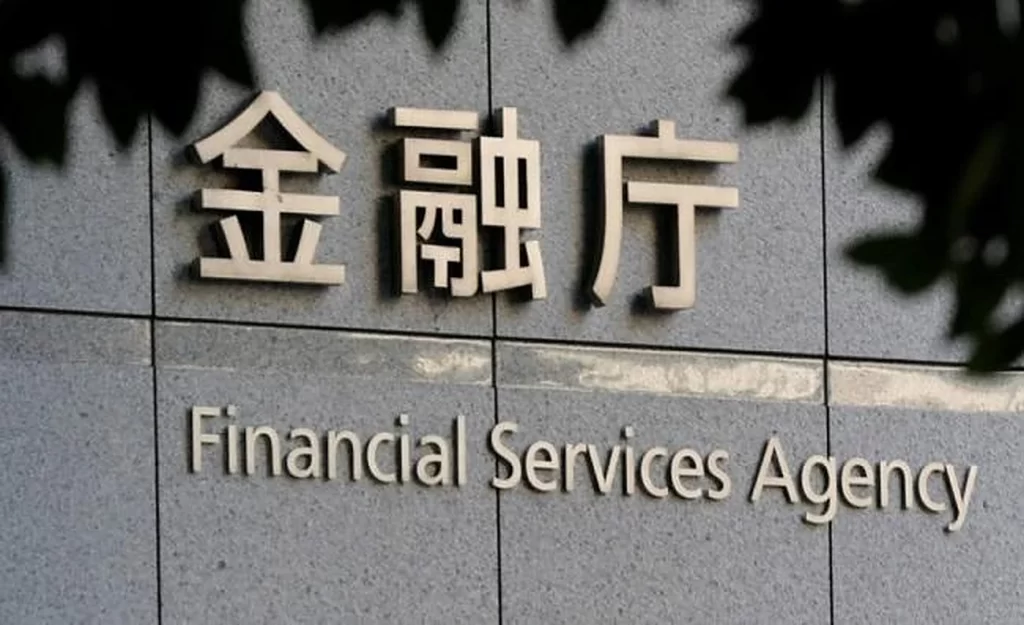The United States Financial Accounting Standards Board (FASB) has ushered in a new era for crypto accounting, aiming to dispel the “poor optics” that have haunted companies holding digital assets, according to Berenberg Capital analysts.
On September 6, FASB gave the green light to fresh regulations regarding cryptocurrency reporting and fair valuation on corporate balance sheets.
Mark Palmer, Berenberg’s senior equity research analyst, emphasized the benefits of these changes, particularly for companies like MicroStrategy.
Now, they can report their digital asset holdings each quarter without being burdened by impairment losses.
“The change should help MicroStrategy and other companies that hold digital assets to eliminate the poor optics that have been created by impairment losses under the rules that the FASB has had in place,” Palmer noted.
MicroStrategy, which started accumulating Bitcoin in August 2020, had incurred a substantial $2.23 billion in cumulative impairment losses.
Over the past three years, its quarterly reports often displayed significant impairment losses on its BTC holdings due to price fluctuations, inviting negative news coverage that inaccurately portrayed a decline in the company’s intrinsic value.
The newly approved rules, slated to become effective in 2025, empower crypto-holding firms to report their assets at fair value.
READ MORE: Ethereum’s Price Stability Under Threat as Bearish Sentiment and Network Metrics Weigh In
Consequently, their quarterly reports will accurately reflect the current values of these assets, allowing for adjustments based on any price rebounds.
This marks a departure from the current scenario, where impairment losses must be recognized and remain unaffected by subsequent price recoveries.
MicroStrategy holds the distinction of being the world’s largest corporate Bitcoin holder, boasting 152,800 BTC as of July 31, valued at approximately $3.9 billion.
The new rules can be applied proactively, and Berenberg predicts that MicroStrategy will do just that, potentially valuing its BTC holdings at $8.8 billion by April 2024.
Berenberg’s note highlights MicroStrategy CEO Michael Saylor’s past remarks about the FASB’s “hostile” and “punitive” treatment of crypto, which he believed deterred more companies from embracing a Bitcoin investment strategy. Saylor now sees these accounting changes as a positive catalyst:
“A change in the accounting treatment would be a significant positive catalyst for the price of Bitcoin, as it would spur adoption by tech companies.”
In conclusion, FASB’s new rules promise a brighter and more accurate accounting landscape for companies holding cryptocurrencies, potentially fostering greater adoption within the technology sector.
Other Stories:
Coinbase Launches Institutional Crypto Lending Service Amid Market Turbulence
Bitcoin’s Price Correction to $22,000 Grows Likely as Bearish Signals Emerge in Derivatives
MetaMask Users Targeted in Cryptocurrency Scam Using Government Website URLs
Casa, the cryptocurrency self-custody platform, has expanded the capabilities of its Ether vaults, enhancing user privacy.
Following the introduction of a multisignature Ethereum self-custody vault to its existing Bitcoin custody service in June 2023, Casa now permits users to employ an Ethereum pay wallet as a relay for their transactions.
This development marks Casa’s commitment to providing a secure environment for users to manage their ETH holdings, enabling up to five private keys to safeguard their assets.
Previously, Casa assisted users in their interactions between ETH vaults and the Ethereum blockchain through its proprietary Casa Relay.
While this facilitated various actions, including contract deployment and transaction execution, it exposed users’ Ethereum addresses to public scrutiny via blockchain scanning tools.
To address this privacy concern, Casa has introduced the ETH pay wallet, a single-signature alternative wallet that serves as a transaction relay for vault users.
READ MORE: MetaMask Users Targeted in Cryptocurrency Scam Using Government Website URLs
Casa’s CEO, Nick Neuman, emphasized that gas fees and transactions originating from an ETH pay wallet would not be linked to Casa on-chain, affording users a greater degree of anonymity.
This feature was in development prior to the launch of the ETH custody vault, demonstrating Casa’s proactive approach to enhancing its services.
Nick Neuman clarified that while the ETH pay wallet enhances on-chain privacy, it does not provide the anonymity associated with certain obfuscation tools in the cryptocurrency space.
All on-chain activity remains visible, but the key advantage is the removal of the connection to Casa on-chain.
Using the ETH pay wallet does entail additional steps compared to the Casa Relay, and users are responsible for covering gas fees with their pay wallet.
However, the added privacy benefit makes it an attractive option for those seeking to prevent the linkage of their on-chain ETH addresses to Casa.
Casa’s commitment to user privacy and security is evident in its continuous efforts to improve its self-custody offerings.
With the introduction of the ETH pay wallet as a relay, Casa users now have more control over their transactions and can enjoy enhanced privacy when managing their Ethereum assets.
Other Stories:
Coinbase Launches Institutional Crypto Lending Service Amid Market Turbulence
Bitcoin’s Price Correction to $22,000 Grows Likely as Bearish Signals Emerge in Derivatives
Ethereum’s Price Stability Under Threat as Bearish Sentiment and Network Metrics Weigh In
The race to establish the first Ethereum exchange-traded fund (ETF) in the United States has officially commenced, triggered by recent 19b-4 filings submitted by the Chicago Board Options Exchange (CBOE).
These filings effectively set the stage for the Securities and Exchange Commission (SEC) to make a crucial decision.
On September 6th, CBOE submitted two 19b-4 applications to the SEC, seeking approval for the listing of the ARK 21Shares Ethereum ETF and the VanEck Ethereum ETF on its BZX Exchange.
This marks a significant development, as it signifies the initiation of the countdown towards a decision by the SEC.
Bloomberg ETF analyst James Seyffart took to Twitter to highlight the significance of these 19b-4 filings compared to the previously submitted S-1 filings.
He pointed out that the clock is now ticking for the SEC to make a determination, and declared that the “Spot Ethereum ETF Race is officially on.” Seyffart estimated a final decision deadline around May 23, 2024.
In the financial world, a 19b-4 form is utilized by self-regulatory organizations, like stock exchanges, to request a rule change from the SEC.
READ MORE: Ethereum’s Price Stability Under Threat as Bearish Sentiment and Network Metrics Weigh In
In contrast, an S-1 filing merely indicates a firm’s intention to list a specific investment product on a national exchange.
The SEC is now obliged to review the 19b-4 filings and make a decision, although it has the authority to delay its decision, as it has previously done with spot Bitcoin ETFs.
Notably, ARK Invest and 21Shares collaborated to submit an S-1 filing to the SEC on September 6th, whereas VanEck’s S-1 filing dates back to July 2021. Seyffart anticipates that more spot Ethereum ETF filings will emerge in the coming days.
Furthermore, it’s worth mentioning that on August 17th, the SEC signaled its intention to approve Ethereum Futures investment products.
Concurrently, various firms, including Grayscale Investments and BlackRock, are actively pursuing approval for spot Bitcoin ETFs, intensifying the competition in the ETF space.
In conclusion, the race for the first Ethereum ETF in the United States has officially kicked off with the 19b-4 filings, and market participants are eagerly awaiting the SEC’s decision, which will have significant implications for the cryptocurrency investment landscape.
Other Stories:
MetaMask Users Targeted in Cryptocurrency Scam Using Government Website URLs
Bitcoin’s Price Correction to $22,000 Grows Likely as Bearish Signals Emerge in Derivatives
Coinbase Launches Institutional Crypto Lending Service Amid Market Turbulence
Ether’s price has experienced a remarkable 31.3% surge between March 10 and March 18, coinciding with the Federal Reserve’s intervention to address the Silicon Valley Bank’s insolvency with a $300 billion injection. Subsequently, Ether (ETH) has maintained a daily closing price exceeding $1,600.
However, concerns are now emerging regarding Ether’s ability to sustain this support level.
This skepticism arises amidst the bearish sentiment prevailing in the cryptocurrency sphere and declining metrics within the Ethereum network.
Over the last six months, the cryptocurrency landscape has been fraught with negative developments.
One prominent issue is the financial struggles of Digital Currency Group (DCG), the parent company of Grayscale mutual fund manager.
Worries are escalating that a portion of the $4.8 billion worth of ETH deposits in the Grayscale Ethereum Trust might be liquidated to address DCG’s debts.
Furthermore, two global heavyweights in the crypto exchange arena, Binance and Coinbase, are embroiled in legal disputes with the United States Securities and Exchange Commission (SEC).
Additionally, initial excitement surrounding the prospect of futures-based Ether exchange-traded funds (ETFs) in early August has waned, with these instruments differing from spot ETFs as they don’t involve actual ETH coins.
In addition to these unfavorable market conditions, Ethereum’s on-chain metrics reflect a stagnation in demand, both in terms of ETH investments and smart contract transactions.
The number of Ethereum addresses holding at least $1,000 worth of ETH deposits is at its lowest level in nearly six months, despite Ether’s peak price of $2,130 in mid-April.
Part of the waning investor interest is attributed to Ethereum’s average transaction fee remaining above $4 for the past six months.
Consequently, despite fluctuations in network staking metrics, there seems to be no increase in the total number of investors when using the $1,000 threshold as a proxy.
Furthermore, data on decentralized application (DApps) activity on the Ethereum network supports the idea of a lack of new users.
READ MORE: Legal Industry Rakes in Over $700 Million from Cryptocurrency Bankruptcies
Even when excluding the significant 60% decline in the Uniswap NFT Aggregator, the average number of active addresses across the top Ethereum network DApps has decreased by 4% compared to the previous month.
From cryptocurrency games to decentralized exchanges, nonfungible token marketplaces, and Web3 services, all sectors have seen a decline in active users, according to DappRadar.
Regarding token activity on the network, with the exception of stablecoins and Wrapped ETH, no project has recorded more than 13,000 unique receiver addresses over the past week.
This analysis underscores the current constraint of Ethereum’s network by its relatively high transaction fees, limiting active user numbers.
Without an increase in network activity, catalysts for a price recovery, such as potential network upgrades and cost reduction or improved user privacy implementations, remain elusive.
Furthermore, recent developments have disappointed Ethereum enthusiasts.
Visa has integrated Solana blockchain settlement capabilities, and Coinbase has announced plans to assist partners in converting old USDC versions to the new format, following Circle’s USD Coin (USDC) introducing native accounts and transfers on the Base chain.
Rune Christensen, co-founder of MakerDAO, has even proposed developing the project’s native chain based on Solana’s codebase, despite its previous affiliation with Ethereum.
Given the overall bearish sentiment in the cryptocurrency market, including legal challenges faced by exchanges and dwindling interest in cryptocurrencies according to Google Trends data, the likelihood of Ether’s price dipping below the $1,600 support level has increased.
Other Stories:
Micro Bitcoin Mining Devices: Embracing Transparency and Community Over Profits
Japanese Financial Regulator FSA Proposes Tax Code Overhaul for Crypto Assets
The likelihood of a Bitcoin price correction descending to $22,000 is growing, driven by emerging bearish signals within BTC derivatives.
Examining the Bitcoin price chart underscores a decline in investor sentiment, attributed to Grayscale’s legal triumph against the SEC on August 29 and subsequent delays in spot BTC exchange-traded fund (ETF) applications.
Crucially, the question at hand is whether the potential for an ETF can outweigh escalating risks.
By August 18, the entire 19% post-BlackRock ETF filing rally had reversed, with Bitcoin regressing to $26,000.
Efforts to reclaim the $28,000 support faltered as optimism for an ETF approval rose following Grayscale’s favorable Bitcoin trust request.
Cryptocurrency investor morale waned as the S&P 500 closed at 4,515 on September 1, only 6.3% below its January 2022 peak.
Similarly, gold, unable to surpass $2,000 since mid-May, sits 6.5% from its all-time high, dampening Bitcoin investor sentiment months ahead of the 2024 halving.
Analysts attribute Bitcoin’s lackluster performance to regulatory actions against Binance and Coinbase, alongside speculation of a potential U.S. Department of Justice indictment against Binance for money laundering and sanctions breaches.
According to Pentoshi, potential gains from a spot ETF approval eclipse the price impact of regulatory actions against exchanges.
Yet, this analysis disregards decreased U.S. inflation (3.2% in July 2023 from 9.1% in June 2022) and the Federal Reserve’s liquidity reduction, unfavorable to Bitcoin’s inflation protection thesis.
Though Bitcoin clings to $25,000 since mid-March, derivatives data suggests testing bulls’ conviction.
Typically, Bitcoin monthly futures trade slightly above spot markets, indicating sellers demand more to delay settlement.
Presently, a 3.5% futures premium is the lowest since mid-June, pre-BlackRock’s ETF filing, revealing reduced demand for leverage buyers via derivatives.
Options markets also offer insights into investor optimism post-correction.
A bearish tone emerges, with protective put options trading at a 9% premium on September 4, contrasting similar call options.
The increasing bearish momentum in Bitcoin derivatives data, coupled with potential spot ETF approval delays until 2024 due to SEC concerns, tips the regulatory landscape in favor of bears.
The looming uncertainty surrounding potential DOJ actions and ongoing SEC lawsuits against exchanges exacerbates the situation.
In conclusion, considering the inability to sustain a positive price momentum despite elevated odds of a spot Bitcoin ETF approval, a retracement to $22,000 appears probable.
This echoes the price level observed when Bitcoin’s futures premium was 3.5%.
Other Stories:
Pro-XRP Lawyer Outlines Potential Settlement Scenarios Amid Ripple-SEC Speculation
Cathie Wood Envisions Transformational Potential in the Convergence of Bitcoin and AI
Binance CEO Makes Massive Claim About Upcoming Crypto Bull Run
A recent development in the legal saga surrounding former Celsius CEO Alex Mashinsky has seen a federal judge issue an order to freeze specific bank accounts and properties associated with him, following a motion from the United States Justice Department.
This judicial decision, dated September 5 and emanating from the U.S. District Court for the Southern District of New York, has approved the unsealing of a restraining order pertaining to Mashinsky’s assets.
Under this order, the Justice Department has been granted the authority to freeze accounts held under the names of various holding companies at Goldman Sachs and Merrill Lynch, in addition to accounts registered under Mashinsky’s own name at First Republic Securities, SoFi Bank, and SoFi Securities.
Notably, the order extends to include a property owned by Alex Mashinsky and his wife, Kristine, situated in Austin, Texas.
The Mashinskys acquired this residence in 2021, and it had been on the market for over a year, a period coinciding with Celsius’s filing for bankruptcy in July 2022.
This Austin property has garnered attention as it is being sold by Alex Mashinsky, the co-founder and former CEO of the cryptocurrency lending platform, Celsius, which declared bankruptcy.
Mashinsky cited his resignation in September 2022, asserting that his role had become a significant distraction, particularly amidst the backdrop of Celsius users grappling with “difficult financial circumstances.”
Even prior to this development, Celsius had been under scrutiny by both state and federal authorities for purportedly offering unregistered securities.
The legal entanglements intensified in July when U.S. authorities arrested Mashinsky, alleging that he had deceived Celsius investors and defrauded users of substantial sums.
Mashinsky pleaded not guilty to all charges and was subsequently released on $40 million bail, with certain restrictions such as electronic monitoring and stringent financial transaction controls in place.
In a parallel legal course, the U.S. Commodity Futures Trading Commission and the Securities and Exchange Commission initiated civil cases against Mashinsky in July, ultimately reaching settlements with Celsius amidst the backdrop of the former CEO facing criminal and civil charges.
Furthermore, the Federal Trade Commission imposed substantial fines amounting to $4.7 billion on Celsius for alleged misconduct in “duping” its users.
However, these penalties were temporarily suspended to facilitate the use of assets in the context of Celsius’s ongoing bankruptcy proceedings.
Other Stories:
Micro Bitcoin Mining Devices: Embracing Transparency and Community Over Profits
Japanese Financial Regulator FSA Proposes Tax Code Overhaul for Crypto Assets
Legal Industry Rakes in Over $700 Million from Cryptocurrency Bankruptcies
The legal sector has capitalized on the downfall of cryptocurrency giants like FTX and Celsius, reaping substantial gains totaling hundreds of millions of dollars in fees.
Professionals such as lawyers, accountants, consultants, and analysts have collectively earned at least $700 million through their involvement in the bankruptcy proceedings of prominent crypto companies over the past year.
This lucrative trend is detailed in a report by The New York Times, which analyzed the financial outcomes of the crypto bankruptcies.
The sum encompasses expenses incurred during the resolution of five major crypto firms’ bankruptcy cases: FTX, Celsius Network, Voyager Digital, BlockFi, and Genesis Global.
This assessment covers the period from July 5, 2022, to July 31, 2023, with an expectation of further escalation as pending cases unfold, including the impending trial of Sam Bankman Fried scheduled for October.
The most substantial beneficiaries in the realm of cryptocurrency bankruptcy are the legal experts tied to the FTX case, amassing a significant sum of $326 million. Notably, the law firm Sullivan & Cromwell, overseeing FTX’s bankruptcy, has been at the forefront, charging a remarkable $110 million in legal fees and an additional $500,000 in expenses.
The complex nature of cryptocurrency regulations, or the lack thereof, has played a pivotal role in driving up costs.
Andrew Dietderich acknowledged that the intricacies of crypto regulations have led to a protracted and multifaceted legal landscape, contributing to higher fees.
Kirkland & Ellis, entrusted with handling bankruptcies for Celsius, Genesis, and Voyager, have accounted for $101 million in billed fees and $2.5 million in expenses.
READ MORE: Binance CEO Makes Massive Claim About Upcoming Crypto Bull Run
Additionally, Alvarez & Marsal, specializing in turnaround management, has reportedly invoiced over $125 million for their involvement in FTX, Celsius, and Genesis cases.
Initial reports in January 2023 indicated the substantial financial gains anticipated for firms like Sullivan & Cromwell engaged in crypto bankruptcy proceedings.
The firm allocated an extensive workforce of over 150 professionals to the FTX case, including 30 partners charging rates surpassing $2,000 per hour.
Acknowledging concerns over exorbitant legal fees, Katherine Stadler was appointed by the United States bankruptcy court to oversee fee examination for the FTX case.
In June, Stadler confirmed that the fees requested by the FTX team, which exceeded $200 million since the November bankruptcy, were justifiable.
Continuing the legal saga, Sam “SBF” Bankman-Fried’s legal team is actively opposing the United States Department of Justice, seeking to counter recent requests by the authority.
These requests encompass an appeal to exclude all seven of SBF’s expert witnesses from testifying in court, a move that could potentially cost up to $1,200 per hour for these witnesses.
Other Stories:
Pro-XRP Lawyer Outlines Potential Settlement Scenarios Amid Ripple-SEC Speculation
Cathie Wood Envisions Transformational Potential in the Convergence of Bitcoin and AI
Japan’s primary financial regulator, the Financial Services Agency (FSA), has taken a proactive stance on crypto regulation, proposing alterations to the tax code governing digital assets.
The FSA’s request, submitted on August 31, aims to revise the taxation framework in a bid to stimulate the growth of domestic firms in the crypto sector.
The most significant recommendation within the FSA’s comprehensive 16-page proposal is the exemption of domestic companies from the “unrealized gains” tax on cryptocurrencies that is currently applicable at the end of each fiscal year.
While some nations only levy taxes when crypto assets are exchanged for fiat currency, Japan imposes yearly taxes on these digital holdings.
Crucially, the proposed amendment enjoys potential acceptance prospects, with the FSA highlighting that the Ministry of Economy, Trade and Industry has already provided its backing to the suggested changes.
The FSA’s rationale for these regulatory adjustments, as outlined in its official statement, revolves around enhancing the ecosystem for the advancement of Web3 technologies.
The proposed changes aim to foster an environment conducive to blockchain-based business startups.
The crypto industry’s proponents within Japan have long been advocating for a recalibration of the national tax structure concerning digital assets.
The Japan Blockchain Association (JBA), an independent entity separate from the government, recently submitted a set of three key requests aimed at reshaping the regulatory landscape for cryptocurrencies.
Among these requests, the foremost is the elimination of the year-end unrealized gains tax imposed on corporations holding crypto assets.
Additionally, the JBA has proposed transitioning from the prevailing tax structure, which taxes individual crypto trading profits, to a system of separate self-assessment taxation, with a standardized tax rate of 20%.
Furthermore, the JBA seeks to eradicate income tax on profits resulting from the exchange of crypto assets by individuals.
Japan’s financial landscape appears to be adapting to the evolving digital asset sector, as regulatory entities like the FSA and advocacy groups such as the JBA actively collaborate to ensure a favorable environment for blockchain innovation and entrepreneurial endeavors.
Other Stories:
Binance CEO Makes Massive Claim About Upcoming Crypto Bull Run
Cathie Wood Envisions Transformational Potential in the Convergence of Bitcoin and AI
Pro-XRP Lawyer Outlines Potential Settlement Scenarios Amid Ripple-SEC Speculation
OKX, a prominent cryptocurrency exchange, is on the cusp of securing a virtual asset service provider license (VASP) in Hong Kong, marking a significant stride towards formal approval.
The exchange anticipates the green light for its VASP license by March 2024.
Li Zhikai, the Global Chief Commercial Officer of OKX, conveyed in an interview that the exchange is actively engrossed in conversations with banks, eagerly awaiting the issuance of the license to initiate operations.
The preparatory groundwork, including technology integration, has already commenced.
Hong Kong, having embraced a pro-crypto stance in 2023, unveiled a regulatory framework to enable crypto exchanges to cater to retail customers.
While a slew of over 80 cryptocurrency firms initially demonstrated interest in establishing a presence within the nation, only a handful, notably HashKey and OSL, successfully procured the requisite licenses to commence retail crypto trading services.
On August 28, HashKey effectively launched retail crypto trading services for Hong Kong users.
To mitigate risks associated with nascent crypto tokens, the regulatory body exclusively sanctioned Bitcoin and Ether trading for retail customers.
READ MORE: Warren Buffett’s Strategy vs. Bitcoin: Analyzing Performance and Potential in a Shifting Landscape
Additionally, regulatory guidelines enforced a 30% cap on investments, limiting individuals to allocate no more than one-third of their net income.
In tandem with HashKey and OSL, Huobi and Gate.io have also submitted applications for retail crypto trading services, awaiting regulatory endorsement.
A representative from Gate.io previously divulged that the Hong Kong Securities and Futures Commission imposes rigorous prerequisites on virtual asset service providers, emphasizing the necessity of insurance and compensation arrangements for client safeguarding.
Moreover, the regulator mandates crypto exchanges to maintain a substantial 98% of assets in cold wallet storage.
Inquiries made to OKX by Cointelegraph for insights into their regulatory journey and prospects in the Hong Kong retail market yielded no immediate response.
The unfolding developments underscore the cryptocurrency landscape’s growing convergence with traditional financial systems and the pursuit of responsible and secure trading environments.
Other Stories:
Ripple Challenges SEC’s Appeal Bid, Asserting Insufficient Grounds in Ongoing Lawsuit
MakerDAO Co-Founder Proposes Solana Codebase for NewChain, Diverging from Ethereum Affiliation
Former SEC Chair Expresses Confidence in Eventual Approval of Spot Bitcoin ETFs
Binance, a prominent cryptocurrency exchange, is facing a series of executive departures amidst mounting regulatory scrutiny from global authorities.
Mayur Kamat, the Head of Product at Binance, has officially confirmed his departure from the crypto exchange after a tenure of almost two years.
Kamat revealed his decision, stating, “The time has come for me to step down and transition product leadership to the next generation of leaders at Binance.
I’ve worked closely with the product teams to ensure a smooth transition,” as conveyed to Cointelegraph on September 4th.
Kamat, who had previously held positions at renowned companies such as Google and Agoda, expressed that this juncture is personally opportune for him to take a break, following two decades of continuous involvement in product-related endeavors.
He expressed gratitude for his time at Binance and for witnessing the exponential growth of the user base.
Kamat conveyed his appreciation to Changpeng Zhao (CZ) and the entire leadership for the remarkable opportunity and mentioned that he will continue to support Binance from a distance.
Before joining Binance as the Head of Product in January 2022, Kamat had been a Product Manager at Google and Agoda.
During his tenure at Binance, he led global product and design teams, playing a pivotal role in the expansion of the user base from 80 million to over 150 million within just 18 months.
READ MORE: Warren Buffett’s Strategy vs. Bitcoin: Analyzing Performance and Potential in a Shifting Landscape
Kamat is recognized as an early advocate of Bitcoin (BTC), having acquired his first two Bitcoins in 2011, a mere two years after Bitcoin’s launch.
He clarified that the acquisition was driven by the need to purchase a VPN connection rather than for investment purposes.
This recent departure follows a series of resignations from Binance, including key figures such as Patrick Hillmann, the Chief Strategy Officer, who cited personal reasons for his exit.
However, market observers speculate that the departure could be linked to the United States Department of Justice’s investigation into Binance.
Other notable departures include Han Ng, the General Counsel, and Steven Christie, the Senior Vice President for Compliance, who left Binance in early July.
The evolving landscape at Binance reflects the challenges posed by regulatory inquiries, causing changes within the executive ranks.
The departure of Mayur Kamat adds to the list of high-profile exits and underscores the heightened scrutiny faced by Binance on the global stage.
This dynamic situation continues to shape the future trajectory of the cryptocurrency exchange.
Other Stories:
MakerDAO Co-Founder Proposes Solana Codebase for NewChain, Diverging from Ethereum Affiliation
Former SEC Chair Expresses Confidence in Eventual Approval of Spot Bitcoin ETFs
Ripple Challenges SEC’s Appeal Bid, Asserting Insufficient Grounds in Ongoing Lawsuit











